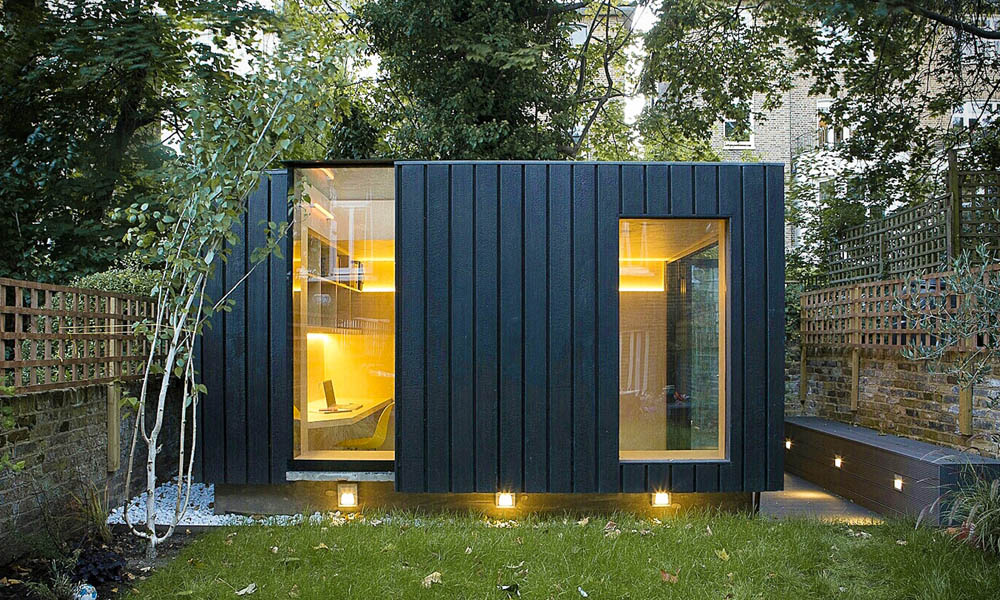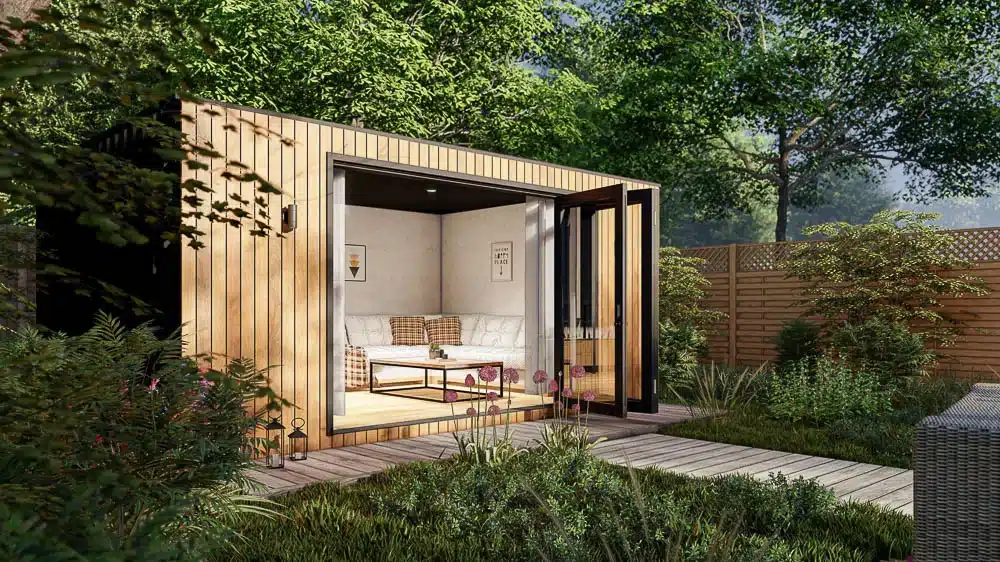When planning to build gardens, conservatories outhouses, garden offices, or extension, highways issues are a significant aspect that could affect the necessity of planning permission. These are the most important factors to consider: Visibility and Sight Lines:
If the new structure blocks the view of drivers who are entering or leaving the property, or impacts the lines of sight at junctions and curves on the road, then planning permission is required. The planning authorities will evaluate whether the building is a danger to the road.
The Highway is nearby:
Typically, any structures that are near to the highway, such as front gardens or extensions that are located close to the street require approval for planning. The distance between the structure and the highway is regulated to prevent any interference.
Access and Egress
Planning permission will be required for any changes to the points of access. This is for the purpose of creating new driveways, or changing current ones, to accommodate a new structure. This will ensure that egress and access are safe and won't disturb traffic flow.
Parking:
If the proposed structure affects existing parking spaces, or requires more parking the planning approval is required. The authority for planning will decide whether the new development has enough parking and doesn't create congestion on the streets.
Traffic Generation
Planning approval is required for development which will create additional traffic, like garden offices where customers visit. This would include a study of the local traffic level and road conditions.
Effect on Pedestrian Access
Planning permission is required if the proposed structure is encroaching on pedestrian pathways or pavements. Insuring pedestrians' access is not hindered and is safe for pedestrians is an essential factor.
Construction Effects on Highways:
The impact of construction activities on highways, including the movement of large vehicles, as well as temporary obstructions might require planning permission. Planning authorities may set conditions to limit disruptions to the road network.
Drainage, Water Runoff and Runoff:
The impact of the development on drainage and water runoff, and specifically how it impacts the highway is another factor to consider. The proposed structure has to be accepted by the planning authority to avoid causing flooding and drainage issues in the roadway.
Street Furniture and Utilities
A permit for planning is required for any construction which will affect street furniture such as lampposts, signs, or underground utilities like electrical cables and water pipes. This will be addressed by the authority responsible for planning in conjunction with other authorities.
Highway Authority Guidelines
Local highway authorities could have specific guidelines and rules applicable to developments near highways. The planning permit will guarantee that these regulations are adhered to in order to keep the safety and efficiency of roads.
Noise and Disturbance caused by Traffic:
If the new building could create more noise or disruption due to traffic, such as a garden-office that receives guests or clients, permission may be required to assess and reduce this impact.
Public Transport Accessibility
The planning permission must be obtained if the development could have an impact on public transport infrastructure, like trains and bus stops. Transport users using public transport will be analyzed in addition to the integration of the transport network.
In short, highways issues are a significant element in the planning process for conservatories, garden rooms, outhouses, garden offices or extensions. To ensure that the proposed development doesn't negatively affect road safety and traffic flow as well as pedestrian access or even the infrastructure overall, make sure to check this. Early contact with local authorities such as the highway authority and the planning authority is a good way to solve these issues, and ensure compliance with relevant regulations. Take a look at the most popular modern garden buildings for website info including garden rooms in St Albans, garden room conservatory, outhouse uk, outhouse for garden, outhouse builders, insulated garden rooms, ground screws vs concrete base, what size garden room without planning permission uk, ground screws vs concrete, Tring garden rooms and more.

How Tall Can You Build A Garden Room?
Specific height restrictions will determine if planning permission is needed for conservatories, garden rooms or outhouses. These are the most important height-related criteria you need to know:
The maximum height for a detached outbuilding or extension must not exceed 4 meters if it has the roof being pitched in two pitches (such as a gable roof).
The other types of roof (flat or single-pitched) should not exceed 3 meters in height. The maximum height cannot be over 3 meters for any other kind of roofing (flat, one-pitched etc.).
Proximity to borders
The maximum height is 2.5 meters if the structure is located within 2 metres of your property boundary. This includes garden rooms, sheds and other outbuildings similar to it.
The height of the eaves
For any structure the maximum eaves (the distance from the lowest point on the roof) must not be more than 2.5 meters.
Conservatories or Extensions
The maximum height of a rear extension with one story must not exceed 4 metres. This includes any parapet and the roof.
Side Extensions
Extensions to the sides of the home must be no taller than 4 meters, and not larger than half the original width.
Special Roofs
Structures with flat roofs are usually restricted to a maximum height of 3 metres.
Additional restrictions on certain areas
In conservation areas (AONB), Areas of Outstanding Natural Beauty or other designated areas, height restrictions are likely to be stricter and planning permission might be required for structures that fall under the permitted development right.
Buildings within National Parks
National Parks structures may also be subject to additional height restrictions which require planning permission.
Roof Design
You should consider the size (excluding chimneys, antennas, etc.). must be taken into consideration. Planning permission could be required if the top point of the structure exceeds the building limit that is permitted.
Neighbours are also affected
Even if an object falls within the height limit but planning permission may be required if the impact on neighbouring properties' privacy views, sunlight or privacy is significant.
Maximum Height Overall:
The height of the entire structure cannot exceed 4 meters. For instance, a office building in the garden with a double-pitched roof should not exceed 4 meters at its tallest point.
Decking and Platforms
The platforms, decking or other structures that are attached to the building should not raise the ground higher than 3 meters. This can avoid the requirement for the issuance of a permit for development.
Always check with the local planning authority to find out about any modifications to regulations and specific rules. Even if you think your project falls within the general permissible development guidelines, there may be local deviations that require approval from the planning authority. Check out the top rated outhouse uk for more info including small garden office, garden room vs extension, garden room permitted development, garden room conservatory, outhouses, Tring garden rooms, garden office hertfordshire, Tring garden rooms, outhouses, what is a garden room and more.

What Are The Limitations On Where To Place Them For Garden Rooms, Etc?
If you're planning to build conservatories, garden rooms or outhouses, garden extensions or offices the location of your property plays a significant part in determining if planning permission is required. Here are some of the key factors for location the proximity of boundaries
If the structure is within two meters of the boundary of the property, it should not have a maximum height over 2.5 meters. If this height is exceeded, planning permission must be sought.
Front of Property:
Structures erected in front of the principal elevation of the house (the front-facing side) generally require planning permission as permitted development rights do not usually allow forward extensions or building.
Front of the Property
If the side extension extends beyond the existing wall, it will often need permission for planning.
Rear of the property:
There are height and size limits for rear extensions. If they exceed the permitted boundaries for development, planning permission will need to be obtained.
Designated Zones
In National Parks (National Parks), Areas of Outstanding Natural Beauty(AONB), and World Heritage Sites (World Heritage Sites) There is a stricter oversight in place. Planning permission is required for new structures in any size.
List of Listed Buildings
The listed buildings are subject to strict guidelines. Any modification, addition, or extension will typically require approval for planning as well as listed building permission regardless of the location on the property.
Green Belt Land:
To preserve open space, development on greenbelt land is restricted. The construction of green belt land is heavily restricted to protect open space.
Zones at risk of flooding
If the property is at risk of high risk of flooding then additional rules which apply. This is to ensure that any new construction does not increase the flooding risks. An assessment of flood risk and planning approval may be required.
Urban vs. Rural environments:
In cities, regulations tend to be different from those in rural regions. Rural homes, for example might have more relaxed limitations on the location and size of outbuildings. But, this may vary widely.
Highways, Public Rights of Way and Public Rights of Way
If the structure is situated close to highways, roads, or public right-of-ways, the approval of the planner may be needed in order to prevent the structure from hindering the view, safety or access.
Shared Ownership Land or Leasehold Land
If the property is leasehold or are part of a shared ownership plan Additional authorization from the freeholder, or managing entity might be necessary, and planning permissions could still be needed based on local regulations.
Other Structures near:
The new structure may need planning permission to avoid negative effects on adjacent property or structures.
You should always consult the local authorities on planning to receive advice specific to your property and the area it is located. Local policies could have a major impact on regulations. It is important to comply with all restrictions to avoid legal problems or penalties. Take a look at the most popular costco garden office for blog examples including ground screws vs concrete, Tring garden rooms, garden room planning permission, outhouse, outhouse builders, outhouses for garden, luxury outhouse, garden rooms in St Albans, what is a garden room, garden office and more.
